When I step off a plane I can always tell if I am on a tropical Island. It’s the smell: the aroma of salt mixed with seaweed and sand suspended in the heavy humid air. It is a wonderfully intoxicating perfume that makes the heart beat quicker while, at the same time, relaxing the mind and body in preparation for several hard days of doing very little. Plenty of time for sloth and indolence, doing as many of the ‘esses’ as possible: sun, sea sand, sunbathing, swimming, sailing, snorkelling and scuba diving.
We are on Zanzibar, off the east coast of Tanzania for a few days of rest, relaxation and recuperation after our Kilimanjaro exertions. And, of course to do a bit of underwater safari off the east side of the island at a place called Matemwe.
Zanzibar is rich in history being one of Africa’s great trading centres and has been for centuries a crossroads of culture, a melting pot of influences where Africa, India and Arabia meet.
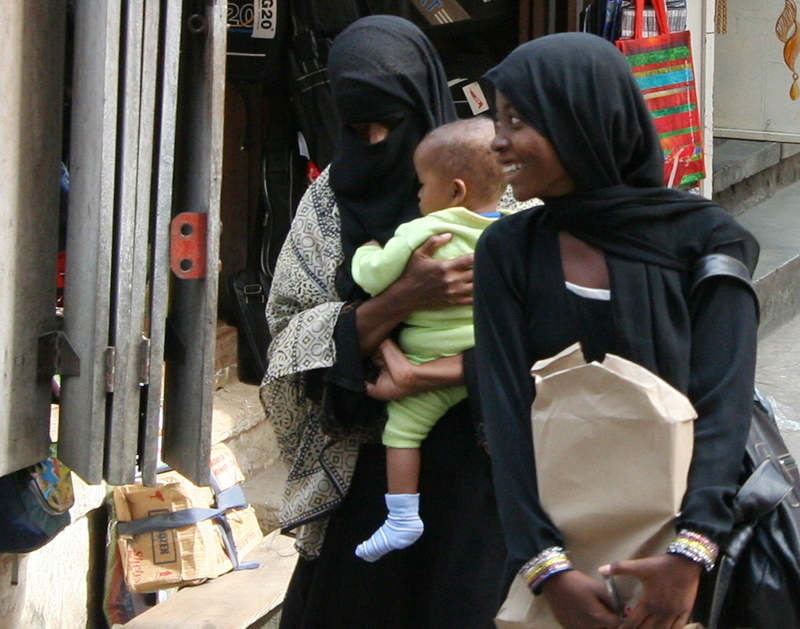 It was a powerful city-state, supplying slaves, gold, ivory, wood and spices to places as distant as Asia, while importing spices, glassware and textiles. Along the trade routes came Islam and the Arabic architecture that still dominates the archipelago today. In fact, trade became so profitable that the Sultan of Oman relocated his court here from the Persian Gulf. The result of all this mixing of peoples is very evident in the faces of the locals with a myriad of features, skin colour, and religion.
It was a powerful city-state, supplying slaves, gold, ivory, wood and spices to places as distant as Asia, while importing spices, glassware and textiles. Along the trade routes came Islam and the Arabic architecture that still dominates the archipelago today. In fact, trade became so profitable that the Sultan of Oman relocated his court here from the Persian Gulf. The result of all this mixing of peoples is very evident in the faces of the locals with a myriad of features, skin colour, and religion.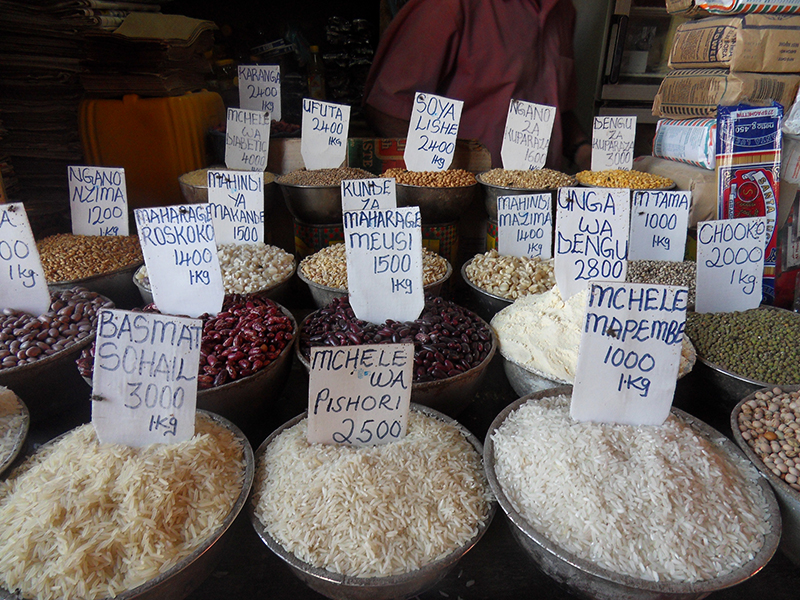 As we bumped along the roads to our hotel, the fruit and spice trade dominated the route. Banana trees were spread everywhere and would have taken over the road in many places if only they had the chance. Any open spaces were filled with spices drying under the sun on sheets in front of houses, and little rustic shops made from limestone and crushed sea shell. It doesn’t seem like a prosperous place but, at the same time, isn’t poor either.
As we bumped along the roads to our hotel, the fruit and spice trade dominated the route. Banana trees were spread everywhere and would have taken over the road in many places if only they had the chance. Any open spaces were filled with spices drying under the sun on sheets in front of houses, and little rustic shops made from limestone and crushed sea shell. It doesn’t seem like a prosperous place but, at the same time, isn’t poor either.
Matemwe is so small anyone could be forgiven for not noticing it at all. It’s a collection of small single room, white walled houses, topped with regimented corrugated iron roofs that look out of place on the uneven, handmade walls. Between the little houses runs a potholed, white sandy road that is the preferred playground of scraggy chicken.
The boundary of the town is marked by a line of coconut palms that in turn define the breadth of the beach. The beach itself is glorious. Fine, soft, brilliant white sand stretches away into the distance. A turquoise sea gently laps the shore whilst a white crested, deep blue Indian Ocean crashes onto a fringing reef. Kids play along the water’s edge, men mend nets or tend their boats, and the sun beats down a pleasant warmth. It seems like Paradise.
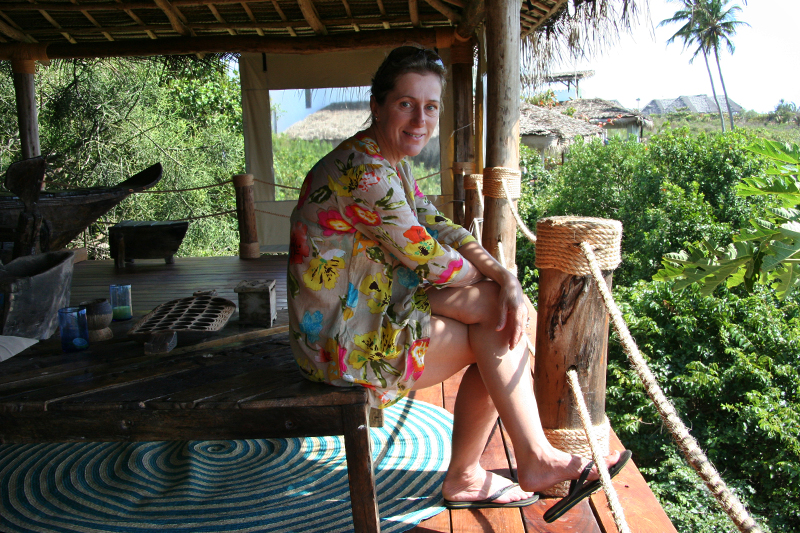 We were given an extremely pleasant bungalow that was raised on wooden stilts to peer over the vegetation on to the beach. Outside the reef, across the different blues of the waters lay the forested island of Mnemba. We had a wide decking area on which to lounge and watch the aquatic activities of the locals who made their living from the Ocean.
We were given an extremely pleasant bungalow that was raised on wooden stilts to peer over the vegetation on to the beach. Outside the reef, across the different blues of the waters lay the forested island of Mnemba. We had a wide decking area on which to lounge and watch the aquatic activities of the locals who made their living from the Ocean.
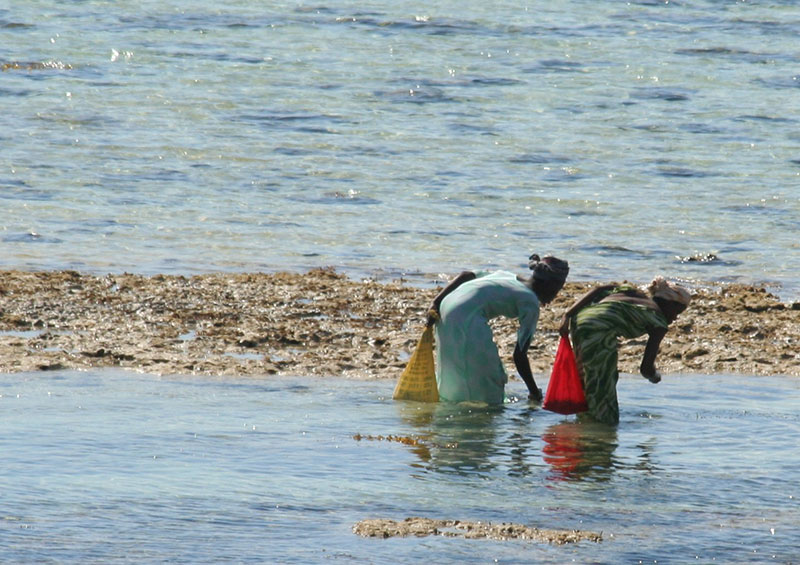 At low tide, they gathered in numbers to wade between the shore and the reef in search of octopus, crustaceans and small fish. So many people combed the area every day that I would be surprised if any living creature remained in the vicinity. If any did, I think they should be named Houdini.
At low tide, they gathered in numbers to wade between the shore and the reef in search of octopus, crustaceans and small fish. So many people combed the area every day that I would be surprised if any living creature remained in the vicinity. If any did, I think they should be named Houdini.
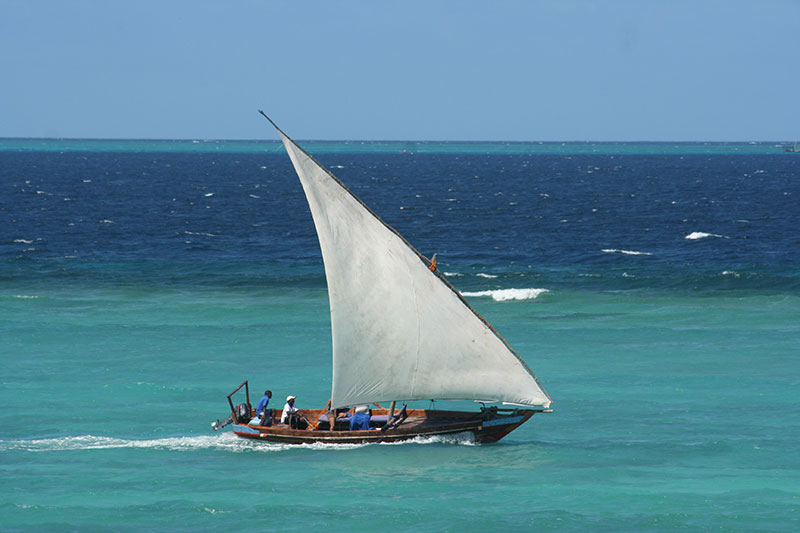 As the tide fills the foreshore, boats begin to appear. Fishing boats punted along by one or two hunters, people waist deep in the water casting fishing nets, whilst, further out, sailing boats of all sizes slid across the azure sea. These sailing boats all have triangular sails that fly in a rickety mast/boom arrangement that is extremely effective at propelling the boats along at an impressively quick rate of knots.
As the tide fills the foreshore, boats begin to appear. Fishing boats punted along by one or two hunters, people waist deep in the water casting fishing nets, whilst, further out, sailing boats of all sizes slid across the azure sea. These sailing boats all have triangular sails that fly in a rickety mast/boom arrangement that is extremely effective at propelling the boats along at an impressively quick rate of knots.
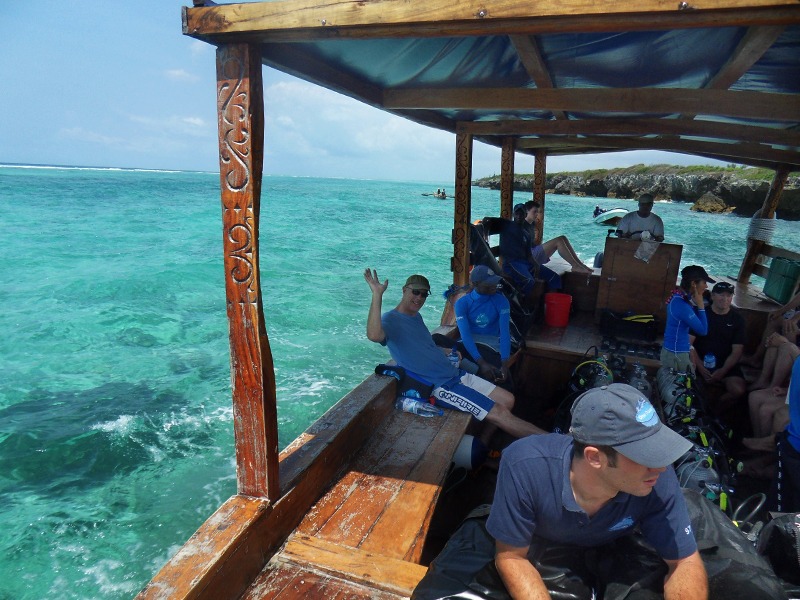 In contrast, the dive boats lumber along, laden with heavy equipment and divers of very mixed ability. These boats have to wait for half tide before they can make the dash over the reef and into deeper water to reach the dive sites. There’s not much room on the boats, they are pretty basic to say the least, and they pitch and roll about a lot in any kind of sea. But the dive sites are good. The best ones have strong currents that the fish life enjoys and we ‘fly’ along under water, gliding on the ocean current. It’s hard work if we want to stop and watch anything but gloriously relaxing when the streams carry us along.
In contrast, the dive boats lumber along, laden with heavy equipment and divers of very mixed ability. These boats have to wait for half tide before they can make the dash over the reef and into deeper water to reach the dive sites. There’s not much room on the boats, they are pretty basic to say the least, and they pitch and roll about a lot in any kind of sea. But the dive sites are good. The best ones have strong currents that the fish life enjoys and we ‘fly’ along under water, gliding on the ocean current. It’s hard work if we want to stop and watch anything but gloriously relaxing when the streams carry us along.
The downside was that that a two tank dive would take 5 or 6 hours out of the day, despite the fact that the dive sites are less than a mile offshore. The amount of hanging about, twiddling thumbs, is considerable so after two days and four dives, we decided to spend the rest of our time ashore. So, after 5 lazy days by the beach, we headed into Stone Town to catch the history and culture of this fabulous island.
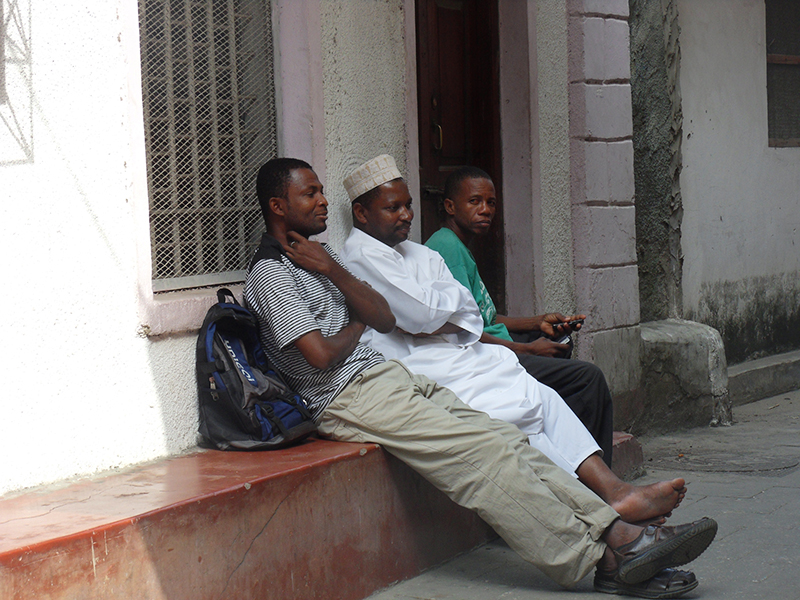 Stone Town is the very soul of Zanzibar. It is the old ancient settlement and the centre of trade. It is full of labyrinthine alleyways and odd architecture. A walk through its cobbled streets will encounter a different experience at every twist and turn: women clad in bui bui (a black cover-all worn by Islamic women outside the home), shops and stalls selling (and smelling) of spices, children playing, elderly men dressed in kanzu (a white full length robe) and, sometimes, wearing a kofia (an embroidered cap). Ancient Persia mixes with old Oman and India’s Goan coast. It’s a unique little biosphere.
Stone Town is the very soul of Zanzibar. It is the old ancient settlement and the centre of trade. It is full of labyrinthine alleyways and odd architecture. A walk through its cobbled streets will encounter a different experience at every twist and turn: women clad in bui bui (a black cover-all worn by Islamic women outside the home), shops and stalls selling (and smelling) of spices, children playing, elderly men dressed in kanzu (a white full length robe) and, sometimes, wearing a kofia (an embroidered cap). Ancient Persia mixes with old Oman and India’s Goan coast. It’s a unique little biosphere.
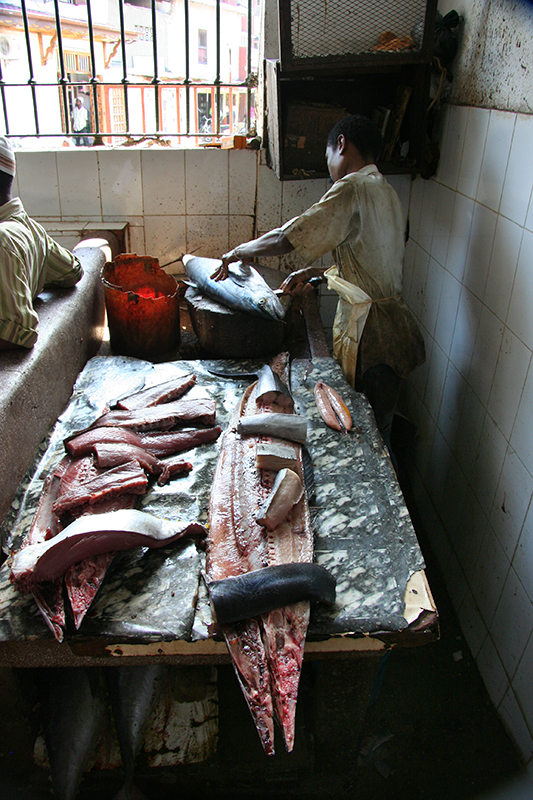 The Darajani Market sells every kind of produce, some alive but mostly dead. Its ancient facilities struggle to cope with the smells and by-products of various forms of butchery. The meat market, in particular, has a stifling aroma of blood, guts, fat and rotting meat that is too pungent for poor Debbie’s sensitive sensibilities. The fish market isn’t much better but at least the liberal use of water keeps the pungent smell down to a more tolerable level. Without refrigeration, at least everything is reasonably fresh. However, the fish are noticeably small, suggesting that the waters are becoming over fished. Disappointingly, there are a number of shark on sale that attract little interest, their fins having been removed to cater for the demand from China.
The Darajani Market sells every kind of produce, some alive but mostly dead. Its ancient facilities struggle to cope with the smells and by-products of various forms of butchery. The meat market, in particular, has a stifling aroma of blood, guts, fat and rotting meat that is too pungent for poor Debbie’s sensitive sensibilities. The fish market isn’t much better but at least the liberal use of water keeps the pungent smell down to a more tolerable level. Without refrigeration, at least everything is reasonably fresh. However, the fish are noticeably small, suggesting that the waters are becoming over fished. Disappointingly, there are a number of shark on sale that attract little interest, their fins having been removed to cater for the demand from China.
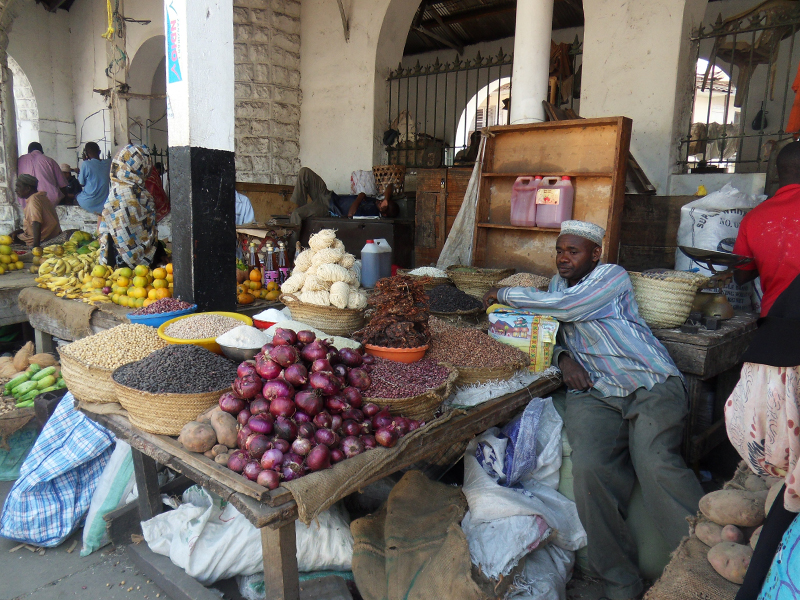 The fruit, veg and spice markets are less organised as they don’t need the specialised equipment and waste management of their meat and fish brethren. A space on the floor or pavement will do, a rickety wooden stall perched against a wall is sufficient, anywhere that has a bit of space available for a scale pretty much is perfect.
The fruit, veg and spice markets are less organised as they don’t need the specialised equipment and waste management of their meat and fish brethren. A space on the floor or pavement will do, a rickety wooden stall perched against a wall is sufficient, anywhere that has a bit of space available for a scale pretty much is perfect.
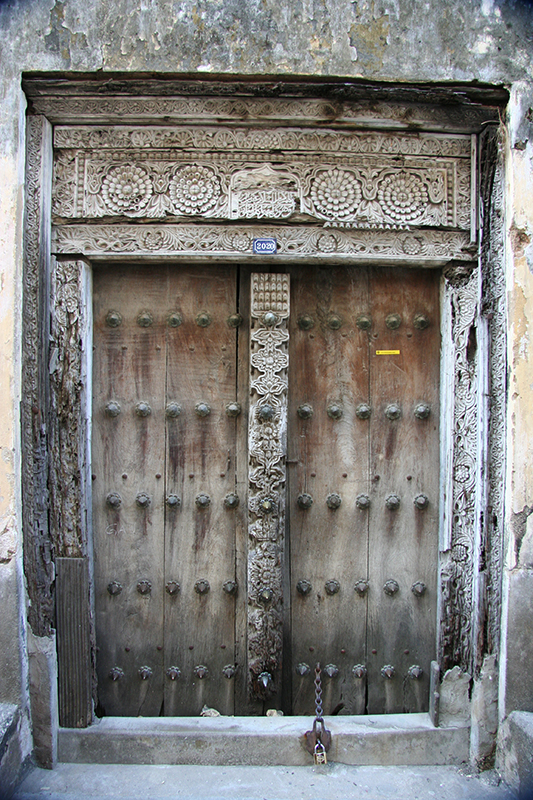 Away from the markets, the rich mélange of architecture becomes apparent. Arabic style houses with their recessed inner courtyards rub shoulders with Indian influenced buildings boasting ornate balconies and latticework. Doors are a feature that makes the locals proud. Three hundred year old solid wooden structures, intricately carved, compete one against another to proclaim the richest and most influential occupants.
Away from the markets, the rich mélange of architecture becomes apparent. Arabic style houses with their recessed inner courtyards rub shoulders with Indian influenced buildings boasting ornate balconies and latticework. Doors are a feature that makes the locals proud. Three hundred year old solid wooden structures, intricately carved, compete one against another to proclaim the richest and most influential occupants.
The newest of the ‘old’ buildings is known as the House of Wonders which was built in 1883 by Sultan Barghash as a ceremonial palace. It was complete with a functioning lift and built on a grand scale under the direction of an English architect. It was the site of one of the shortest wars in history when the British (an attachment of 9 marines) laid siege to it for all of 45 minutes before the Sultan decided to do as he was told.
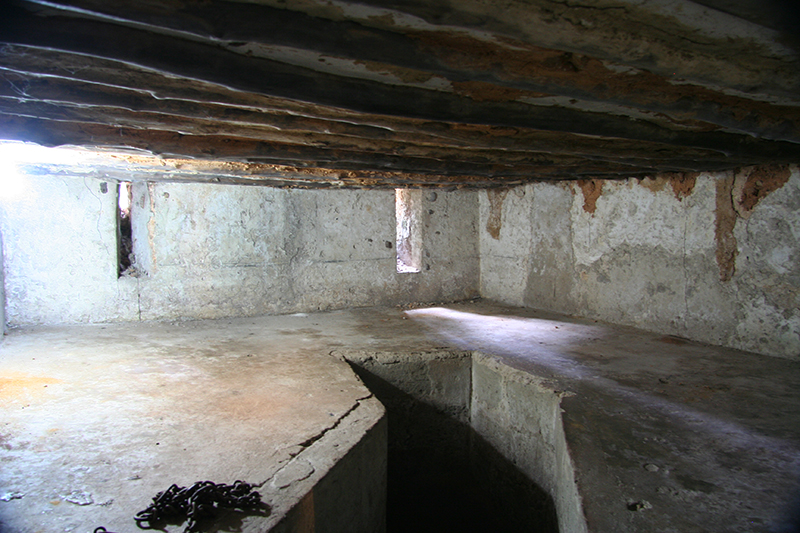 But the strongest emotions are generated by the remnants of the slave trade. Some of the underground cells where the slaves were held prior to the weekly auction are still intact. They are tiny areas with little ventilation and no sanitation, where up to 50 of them were chained together in horrendously cramped conditions. The site of the whipping post, to which the slave was chained for sale, is now covered by the Anglican Cathedral. But the spot is marked on the red marble floor just in front of the altar.
But the strongest emotions are generated by the remnants of the slave trade. Some of the underground cells where the slaves were held prior to the weekly auction are still intact. They are tiny areas with little ventilation and no sanitation, where up to 50 of them were chained together in horrendously cramped conditions. The site of the whipping post, to which the slave was chained for sale, is now covered by the Anglican Cathedral. But the spot is marked on the red marble floor just in front of the altar.
The famous Dr. Livingstone was very influential in the termination of the trade, working tirelessly with every authority he could locate in an effort to get it banned. He even became friendly with the Sultan but, the Sultan had too much of a vested interest to bring about its end. By all accounts, around 50,000 slaves were sold in Zanzibar’s market every year. This is a stunning number and one that doesn’t feel right. Given that there would be a high mortality rate in capturing and transporting slaves to Zanzibar for sale, the number suggests that, at least a quarter of a million people were needed to meet the demand every 5 years. East Africa and lands as far away as the Congo and Malawi would have been emptied of people.
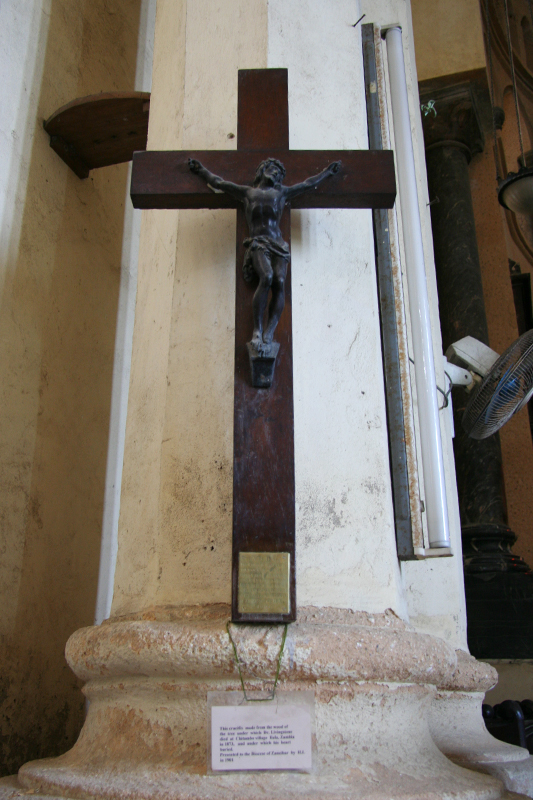 David Livingstone and his ‘finder’ Henry Stanley together with a third, a cleric named Steer, eventually forced (with the help of the British Government) the Sultan to sign a treaty bringing the trade to an end in 1873. It still continued, of course, on the quiet until the British sent the 9 Marines to Zanzibar in 1911 to finish it once and for all. Livingstone eventually died in the Congo while sitting under an acacia tree. His body was buried under the tree at which he died, and a branch was cut off and made into a cross which also stands in the Cathedral.
David Livingstone and his ‘finder’ Henry Stanley together with a third, a cleric named Steer, eventually forced (with the help of the British Government) the Sultan to sign a treaty bringing the trade to an end in 1873. It still continued, of course, on the quiet until the British sent the 9 Marines to Zanzibar in 1911 to finish it once and for all. Livingstone eventually died in the Congo while sitting under an acacia tree. His body was buried under the tree at which he died, and a branch was cut off and made into a cross which also stands in the Cathedral.
Our final act of tourism was to visit the house of Zanzibar’s most famous person, Freddie Mercury, the deceased lead singer of Queen. He was born in 1946 in Stone Town to Parsee parents. In those days he was called Faroukh Bulsara and, with a name like that, it’s not difficult to understand why he wanted to change it.

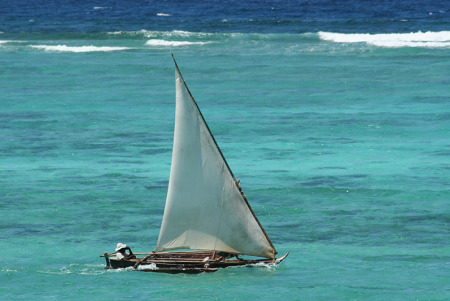
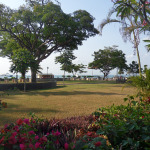
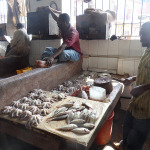
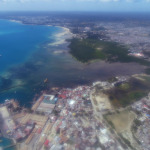
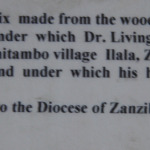
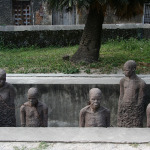
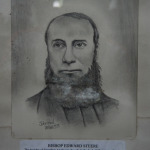
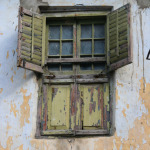
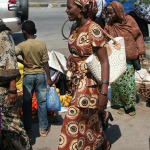
No comments yet.